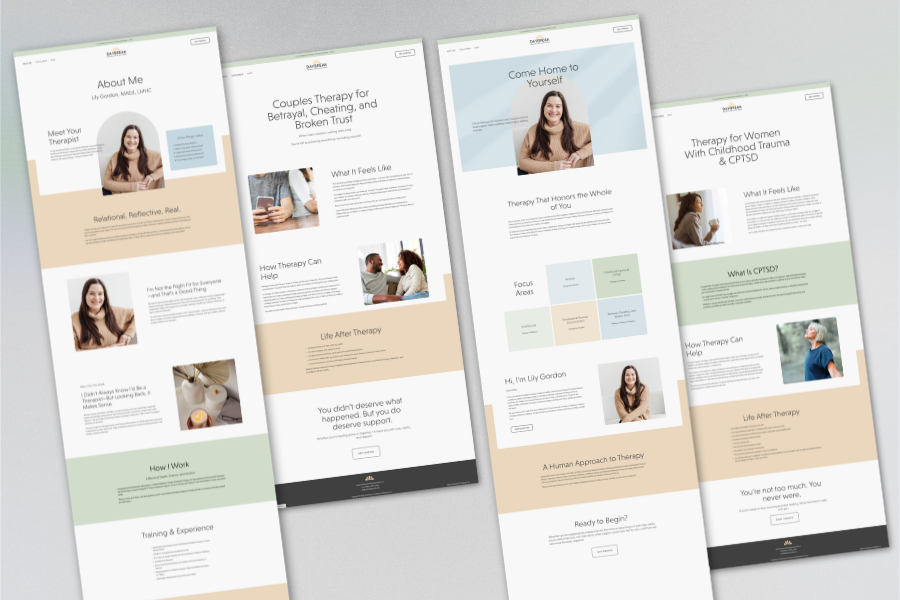Leverage Your Practice Website and Waitlist System to Keep Your Therapy Calendar Full
Leverage Your Practice Website and Waitlist System to Keep Your Therapy Calendar Full
Many of you have a full practice, and managing a waitlist makes you cringe. Perhaps you tried keeping a waitlist in the past, but it was a total hassle. However, the absence of a waitlist may leave you feeling vulnerable to the uncertainty of client inquiries, resulting in unanticipated gaps within your schedule and, consequently, unearned income. The immediate need to fill vacancies may lead you to accept clients hastily, potentially compromising the ideal fit.
Conversely, a well-managed waitlist serves as a preemptive solution. Proactively screening and approving potential clients can create a roster of best-fit clients ready to engage when openings arise. A waitlist can minimize the impact of fluctuating client inquiries, mitigate the pressure to accept unsuitable clients in moments of scarcity, and ultimately contribute to a more sustainable and resilient practice.
In recognizing a waitlist's potential benefits, I explored effective and easy-to-manage solutions. I contacted a creative therapist friend who had been experimenting with alternative waitlist strategies in her own practice. Graciously, she shared valuable insights and lessons learned. Inspired by her experiences, I combined some of her approaches with some tailored adjustments of my own, crafting a waitlist model that seamlessly aligned with the nuances of my practice.
As I present this refined approach, I hope it serves as a catalyst for your own waitlist considerations. Whether you adopt a similar system or determine that a waitlist isn't the right fit for you, I aim to empower you to make informed decisions that elevate your practice. So here is my straightforward yet effective waitlist system that keeps my calendar fully booked and stress levels at bay.
1. Update Your Website
During periods of full capacity, switch your New Client Inquiry form on your practice website into a "Waitlist Form." If yours acts as a screening form, you shouldn’t need to change anything on the form itself (you’ll learn why later). A quick note next to the form lets visitors know you’re fully booked, but they can snag a spot on the VIP waitlist if they complete your form. Also, it’s probably a good idea to jazz up your FAQ section with crystal-clear instructions on how this waitlist operates.
If you’re curious about how to use a screening form in your practice, please refer to this post: Three Ways Your Private Practice Website Can Streamline Your Client Onboarding Process
2. Pre-Screen
As I said above, streamline client screening by having potential clients complete your online screening form as usual. When a potential client completes the form, they feel more assured of a good fit up front, and you avoid last-minute surprises when you're desperate to fill a spot in your schedule. You don’t have time for prolonged back-and-forths!
3. Welcome Email
Create a pre-drafted welcome email that excites the waitlisted clients from the get-go. In my email, I express confidence in our potential collaboration, let them know I hope we can work together, and provide instructions for my unique waitlist process.
4. Follow-Up Protocol
Once they're on the waitlist, it's smooth sailing. Invite them to complete weekly email check-ins. You’ll respond to their email by confirming their continued interest. Once again, create an email template that’s ready to roll, ensuring your response is quick.
5. Expedite Onboarding
When a slot opens, reach out to those who touched base that week. It's a first-come, first-served deal with a 24-hour deadline. If they grab the spot, you're off to the races – quick onboarding, minimal hassle, and no income lost! Adherence to a 24-hour response window facilitates swift scheduling - so it’s probably a good idea to let the client know that this is your protocol when you send the first email (Welcome Email).
A note about consultation calls: You can offer a phone consultation at this stage if that’s your usual protocol. I usually schedule their first appointment as soon as possible and then offer a phone consultation that would happen in the meantime. I don’t require the phone consultation because my screening form answered all my questions, so this would strictly be for them. They usually don’t feel the need for it once they have their first appointment scheduled.
Closing Remarks
There you have it! No more income-related stress. Now, you can master the art of efficient client flow like the seasoned therapist you are!
Before you rush to replicate my strategy, let's establish some ground rules: I'm thrilled to inspire you, but in the interest of professional integrity, please create your own materials. Please don't reach out for email examples or website verbiage—I've got a practice to run! Feel free to peruse my site for inspiration and, if needed, leverage AI or an online writing tool for that extra nudge.
Wishing you continued success in optimizing your practice's efficiency and maintaining seamless client flow.































